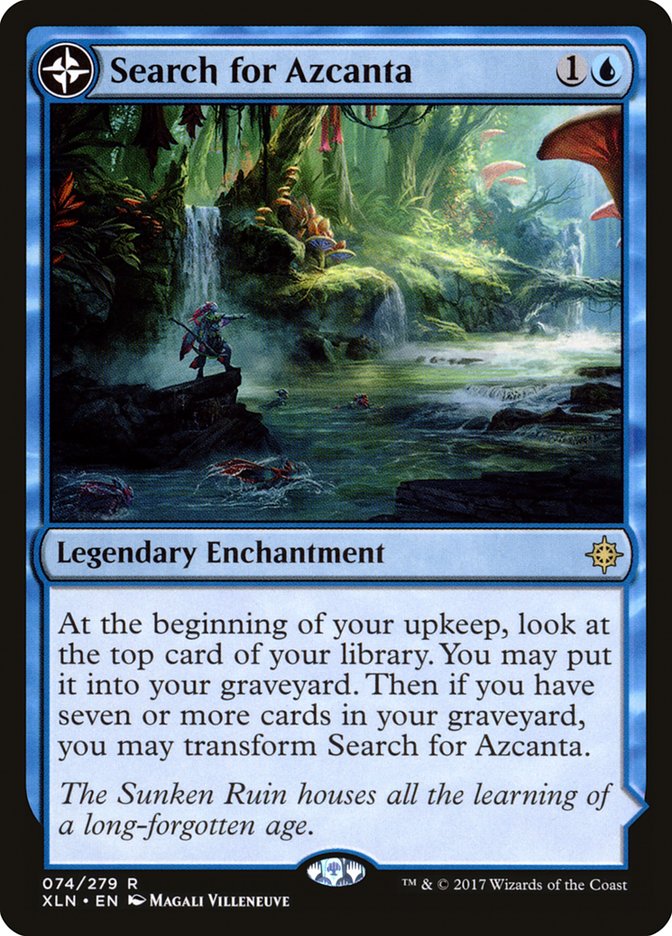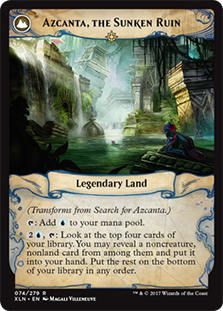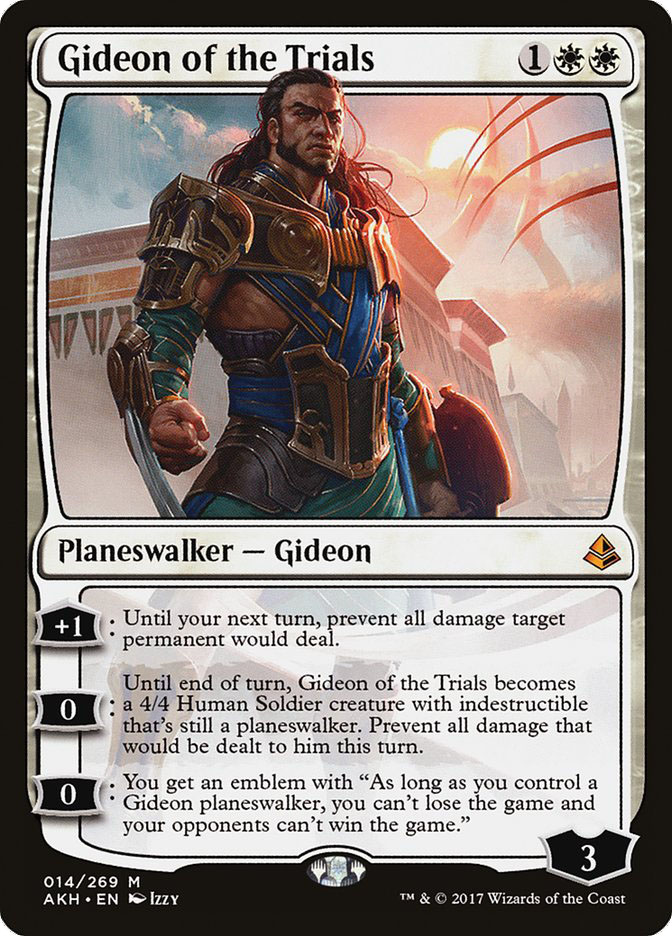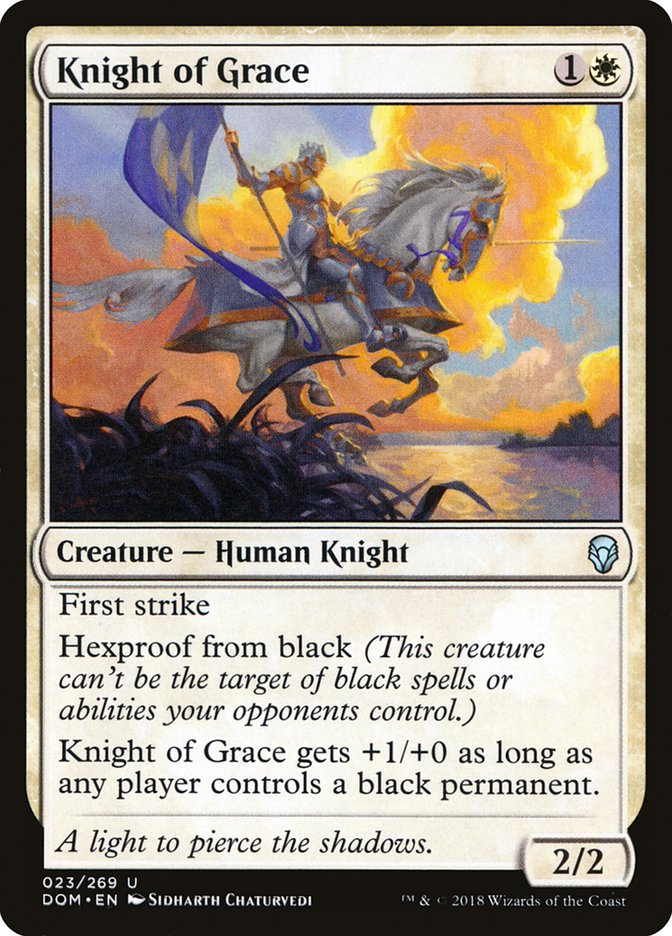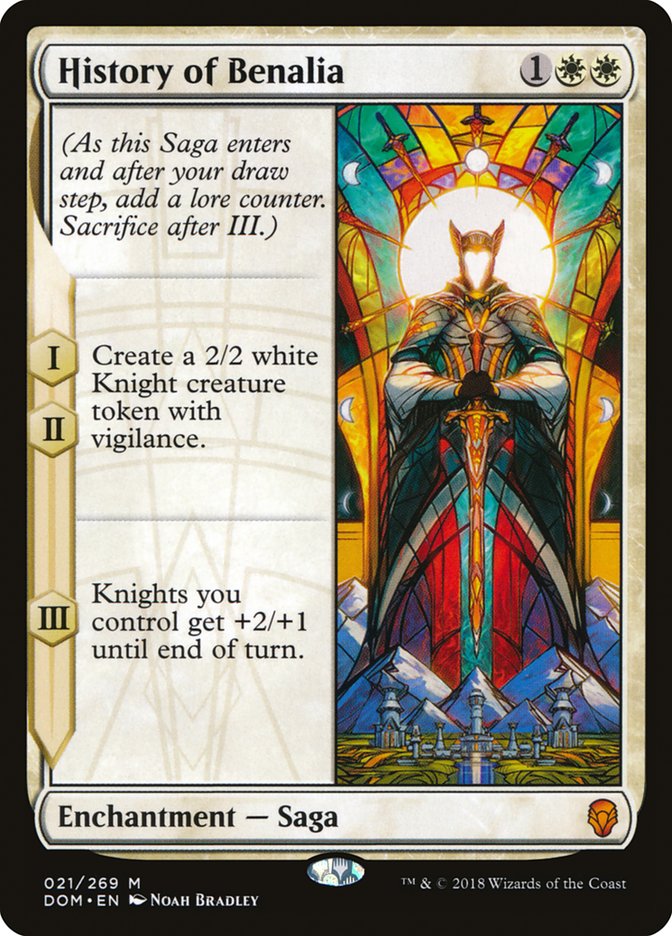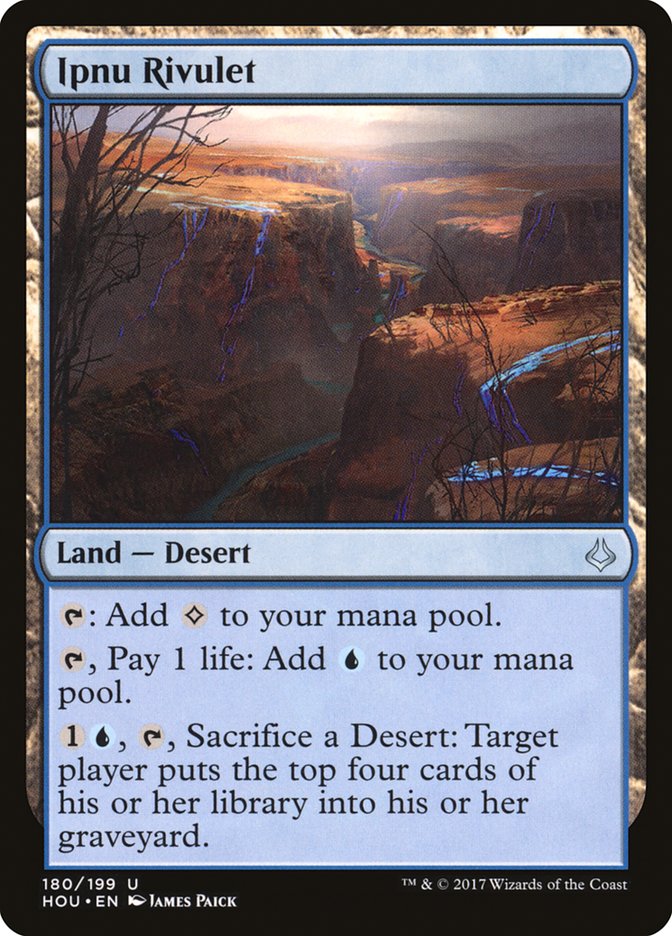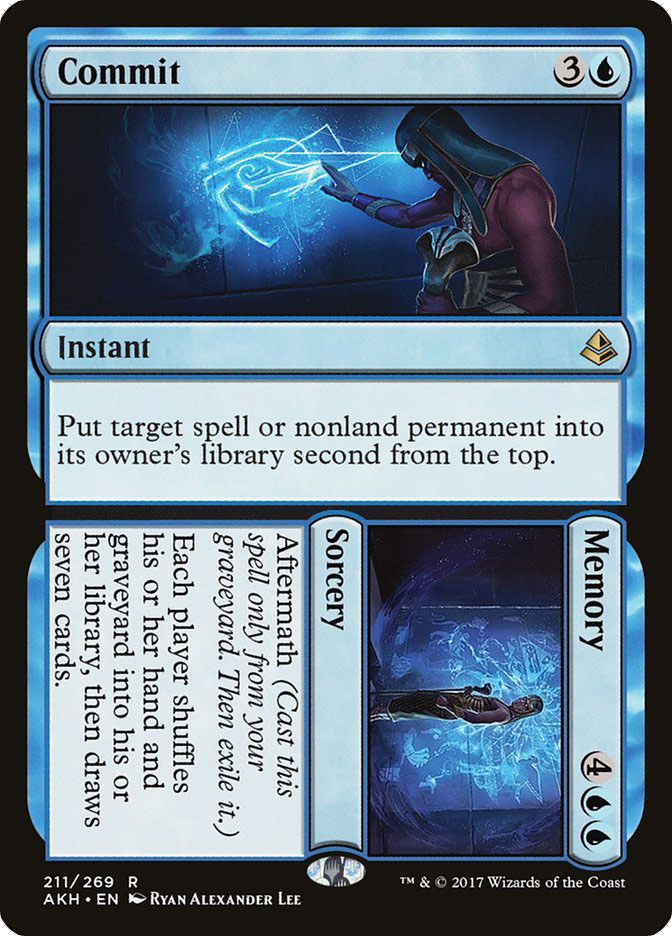This past weekend I played U/W Control as my Standard deck of choice for
Grand Prix Toronto. Many of you may know that control decks aren’t my
normal cup of tea, and in fact, I often despise them for a multitude of
reasons. Anyone who reads my weekly content can tell you that I often
believe control to be a perennially overhyped archetype, as I always
believe something out there’s better than it. You just have to be willing
to put in the time to figure out exactly what that is.
For some, that deck’s too difficult to discover or not even worth putting
the effort into figuring out. Plus, many really enjoying playing control
and I can understand why. It’s “fun” to control your opponent? I don’t
agree with that in the slightest, but I can understand the sentiment of
using demoralization as a win condition. I mean, that’s exactly what I used
to win almost every game I played on my way to a second-place finish!
Planeswalkers (4)
Lands (12)
Spells (44)

For me, control is a deck I only play when I can’t find anything better.
Last weekend, I didn’t try to convince myself into playing U/W Control. In
fact, it was quite the opposite. I wanted to talk myself out of playing the
deck and couldn’t do it. U/W Control looked like the best deck, and even
after the dust has now settled I still believe it to be a contender for
best deck in the metagame.
There’s many reasons why I was still nervous to play the deck this past
weekend even when I truly believed it to be the best choice. For starters,
I rarely play control decks due to my beliefs, which always puts the fear
of failure in the forefront of my mind:
- What if I don’t play the deck well enough?
- What if I don’t build it correctly?
-
Will I get outplayed in the mirrors against good opponents who play
control decks more regularly? - Will I play the deck at the speed needed to not get draws?
-
In close matches that take a while, will I even have enough time to
win some game threes?
All these questions ran through my head in the days leading up to the
event, but my team trusted me when I said any of these issues coming to
fruition would still net me a better record than not playing U/W Control. I
just believed in the deck so much!
So why is U/W Control this good?
T
he hero of our hearts.
Teferi single-handedly turned me into a Jeskai Control player in Modern and
now a U/W Control player in Standard. I don’t even care if y’all shame me
for all the years of making fun of control! It’s just insane!
It’s proactive, defensive, creates velocity, and can even be your win
condition. That sounds very similar to what people used to say about Jace,
the Mind Sculptor and, quite honestly, I can see a world where Teferi will
eventually become the second best Planeswalker of all time. I have no doubt
in my mind that Teferi will be the best Planeswalker of all time when
relating to their time in Standard. He’s just that good!
The threat of winning the game with Teferi is all you need in game one, and
your opponent must concede to save time once you’ve presented the lock of
Teferi and Azcanta, the Sunken Ruin. If they make you create an emblem,
find a second Teferi, and then start putting it on the bottom of your
zero-card deck, they won’t have enough time to win the match themselves.
Once you have Teferi and Azcanta going twice a turn, do they even wanna
still be there? Of course not! I won almost every game one I played this
past weekend and never once did anyone stick around once I was choosing not
to draw any more cards, as my hand was already filled with upwards of five
counterspells.
The sideboard does have a Gideon of the Trials, three copies of Knight of
Grace, and another three copies of History of Benalia that all act as win
conditions in the matchups they’re sideboarded in against, but I’d only
sideboard additional threats in with this deck if they’re absolutely
necessary. The more threats you play, the less controlling aspects you’ll
have in your deck, but also expose yourself to otherwise dead cards like
Unlicensed Disintegration, Seal Away, or even Essence Scatter.
The only reason I played Knight of Grace in my sideboard was that it was
decent against W/B Aggro, good in the mirrors, and great against decks like
B/U Midrange where they have way too many tools to grind us out of the
game. Having an early creature to beat down with can turn the tides against
decks like that and I often found myself winning games as early as turn
seven in a game my opponents thought wouldn’t conclude until turn 17. When
time was running real low in round eight of Grand Prix Toronto, I even
found myself transforming into the most aggressive deck I could against G/B
Constrictor and stole the game when they kept a hand full of Lifecrafter’s
Bestiary, Arguel’s Blood Fast, and Planeswalkers.
I wouldn’t recommend it every time, but knowing it’s possible is at
least nice!
I don’t know what direction the format’s going to be heading in over the
next few weeks, but one thing I’m confident in saying is that this deck is
the real deal. It won the
SCG Classic in Louisville
, almost took down Grand Prix Toronto, and I see no reason why it won’t
continue taking down tournament after tournament.
That is, of course, if you play the deck correctly…
There’s many lines that need to be learned before taking this deck to a
serious event, but one you’ll have to master in particular is making
decisions at very quickly. Yes, that’s hilarious to hear coming from me [CEDitor’s Note: Yes, it sure is, Bard], but I knew I would have
to play exceptionally fast this past weekend to be successful with this
deck, and I actually pulled it off! I did end up drawing once in the swiss,
as I didn’t even finish a single game in the mirror and maybe that right
there’s a big red flag for the deck, but I believe it only happened because
I didn’t respect Ipnu Rivulet as much as I should have.
In testing, I never played against opponents well versed in the mirror so I
didn’t find too many issues dispatching them. Then came the event where I
bounced back and forth against two decent U/W Control opponents and it
seemed like there was no way for either of us to get out of game one
without both copies of Commit being cast. In all honesty, that might make
the deck a very scary choice, but I’ll ignore that fear for now for the
sake of this article. In time we’ll find out how to properly build this
deck so that mirrors don’t cost both players their tournament lives.
Let’s talk about the matchups and get you prepared for this coming weekend.
Wait, am I prepping people on how to properly play a control deck? There’s
a few things I find wrong with this…
Here’s my “updated” list but, really, I just made some changes to the
manabase. I don’t know what I would change about the deck itself just quite
yet, but it would probably involve reducing the total number of Fumigates
in the 75.
Planeswalkers (4)
Lands (14)
Spells (42)

VS W/B Aggro
W/B Aggro has some aggressive starts that are difficult to come back from,
but other than that, the matchup is relatively good. Their Toolcraft
Exemplar Scrapheap Scrounger History of Benalia draws will get you from
time to time, but what more can we do? Well, for starters, this is one of
the main reasons why I sideboard three Knight of Grace, as it’s a great
card to come down in the early turns, putting a halt to an opponent’s
aggression. It’s even a nice way to deal with Knight of Malice which can be
difficult at times.
There are a few interesting plays that come up in the matchup like finding
great times to kick Blink of an Eye on your own enchantments. An opponent
will clearly sacrifice their entire Walking Ballista when you target it
with Seal Away or Cast Out which leaves a “naked” removal spell just lying
on the battlefield. When you have time, often representing Settle the
Wreckage, you can take the time to get back your removal spell while
drawing an extra card. Other times, you don’t have the time to do such cute
plays and during games where you look to be getting run over, I highly
suggest just casting a bounce spell early to stem the bleeding.
Out (on the draw):

In (on the draw):

Out (on the play):

In (on the play):

Walking Ballista becomes a little scarier after sideboard because you have
less ways to counter it, but it’s foolish to keep Essence Scatter in your
deck as they really don’t have that many creatures to begin with. Instead,
you play more of a “tap out” strategy against them with cards like
Sorcerous Spyglass and Knight of Grace. Of course, you aren’t actually
tapping out every turn, but sometimes you will find yourself playing cards
like Cast Out on your turn to deal with a Planeswalker that came down the
turn prior. The matchup isn’t one I would consider great, but I do feel
favored in it even though it kept me from winning the whole tournament last
weekend. In fact, W/B Aggro was two of my three losses on the weekend.
VS R/B Aggro
This is a very easy matchup for some reason. They just don’t have the
aggressive cards that W/B Aggro has, like Toolcraft Exemplar or History of
Benalia. Instead, they have easy to deal with threats, like Goblin
Chainwhirler and Rekindling Phoenix. In all my testing and tournament
experience, I’ve only lost to this matchup once and barely dropped any
games throughout it at all. That’s one of the reasons why my sideboarding
in this matchup might be slightly off, but it’s difficult to know exactly
what to do when everything works.
Out:

In:

VS Creatureless U/W Control
The mirror is rather interesting in game one. Search for Azcanta is by far
the best card in the early turns, as it’s one of the only ways manipulate
your deck. The advantage created by one player having it is massive, but
only if they can capitalize on it, which isn’t always the case (especially
when you really don’t want to counter cards like Cast Out or Blink of an
Eye targeting it). One of the biggest mistakes in the mirror is countering
irrelevant spells, but knowing what’s relevant can be tricky to get down
until you’ve played the matchup a handful of times.
The best way to gain an advantage in the mirror is to capitalize on an
advantage, but the only way to do that is to ultimate a Teferi, which can
be difficult. That’s why these mirrors can end in a draw so easily,
especially since the player that feels most threatened by getting decked
can spin the wheel with Memory, which is difficult to fight over in the
last stages of the game. That’s what makes an early Search for Azcanta so
threatening, as it can allow one player to flood on white cards while the
other hits all their land drops and draws mostly relevant spells.
Out:

In:

VS U/W Control w/ Torrential Gearhulk
History of Benalia allows the sideboarded games to move much faster as the
first player to the battlefield will often find enough leverage to win the
counterwars down the road. It’s also one of the reasons why I added Knight
of Grace to my sideboard, as it was an easy way to defend myself from
History of Benalia but also worked well with the card itself. It’s also a
nice card to have on the battlefield to protect yourself from them playing
Teferi to deal with your copy of Teferi.
Out:

In:

VS G/B Constrictor
Out:

In:

VS Mono Green Stompy
Out:

In:

Both matchups play out very similarly. They have aggressive starts in game
one that are often stymied by our high density of reactive spells, and both
sideboard in cards like Lifecrafter’s Bestiary and Nissa, Vital Force.
Sometimes the card draw can get out of hand, but Teferi, Blink of an Eye,
and Cast Out all do a good job of making sure their card advantage
permanents don’t get out of hand. Sometimes they do, but I’ve learned
they’re not nearly as threatening as they once were when playing B/U
Midrange or U/B Control decks in the past.
Seriously, Teferi, Hero of Dominaria is really messed up…
I know this deck is taxing to play with and against, but it seriously is
the real deal. The only reason why the masses may not pick it up in high
numbers is due to how risky it can be for drawing yourself out of events
due to playing mirrors, but that might be worth it in the end.
It’s. Just. That. Good.



